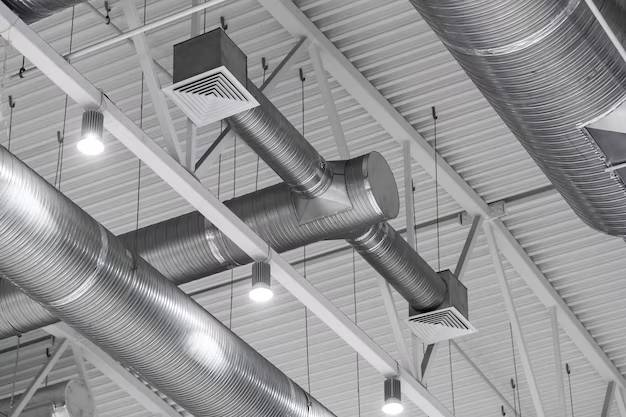Introduction The last step in structural design is to prepare a structural drawing. A structural drawing contains details describing how

Introduction
The commercial kitchen ventilation system is a significant component in restaurant design. One reason for that is that it affects the kitchen, dining room as well as other areas. Besides, commercial kitchen ventilation systems capture and contain smoke, VOCs, grease, and heat produced in the kitchen. This helps to prevent fire and health hazards in the restaurant.
One thing you need to note about CKV though is that these systems don’t have a one-size-fits-all. That is because different food items need different ventilation equipment to prepare. Also, there are several factors you need to consider when designing a CKV system to ensure the efficiency, beauty, and functionality of the space.
Don’t worry though! In this post, we will show you various ways you can use to improve the CKV in your restaurant’s kitchen. Hopefully, this will help you find and install the right kitchen ventilation system in your restaurant!
First, let’s check out the importance of having commercial kitchen ventilation systems in restaurant design.
Importance of commercial kitchen ventilation design
Commercial kitchen MEP design is essential both to customers and employees of any foodservice establishment for various reasons. These include;
Proper ventilation in the kitchen involves the complete replacement of air in the space. Simply put, air removed from the kitchen through the exhaust system has to be replaced by air drawn in through the HVAC unit or ventilation system.
As a drawback, this cooling and healing energy can be removed from the space together with odors, smoke, and other airborne particles. However, a correctly designed CKV system can prevent this problem. In essence, the system will reduce the amount of conditioned air being pulled out through ventilation.
Kitchens can become extremely uncomfortable for people working in them since they’re usually very hot. Similarly, if the HVAC unit is not balanced properly, the kitchen may become too cold for comfort. In addition, cooking and preparing food produces odors, smoke, and other airborne particles that can cause respiratory problems or irritate the skin and eyes.
On the bright side, a CKV effectively removes any of these airborne irritants. Moreover, it regulates the temperature throughout the kitchen to ensure the comfort of the occupants.
Pollutants contained in kitchen air like dust and grease can contaminate ventilation systems. Once that happens, ducts, hoods, ventilation fans, and other systems have to be cleaned. Something that creates an additional expense for the owner of the restaurant. Interestingly, a proper CKV system design can ensure effective filtration to reduce the number of contaminants built-up on the ductwork or ventilation equipment.
Cooking and food produce odors that cannot be avoided in the kitchen. Unfortunately, these odors tend to escape into other spaces within the restaurant where they’re disagreeable to customers. Thankfully, installing a properly arranged CKV system prevents those odors from escaping into these spaces.
How to improve Commercial Kitchen Ventilation (KCV) system in restaurant design
In general, restaurants need 2 types of ventilation to ensure the indoor setting stays cool. That is’ general ventilation and necessary ventilation.
Exhaust hoods are considered as necessary ventilation. That’s because the system filters and captures all the smoke, heat, and other airborne particles not needed in the kitchen. Also, a kitchen vent hood is an important component of a commercial kitchen mechanical design. In most cases, the vent hood is attached to the top of the oven.
Moving on, makeup air is another essential component needed for necessary ventilation. Besides, the exhaust system continuously draws air out of the restaurant’s kitchen at a 100% rate. For that reason, it is important to draw in an adequate amount of outdoor air into the kitchen at an 80% rate. This will help to eliminate issues like reduced energy efficiency, poor air quality, and stuffy/ drafty areas in the restaurant building.
Although kitchens are seen as the heart of any restaurant, other spaces within the restaurant need good air quality too. Hence the need to integrate the CKV system with an HVAC system. This will ensure that there is proper ventilation circulating throughout the whole restaurant. Besides, integrating the functions of both systems will provide the best outcome by balancing each unit’s efficiency and effectiveness.
Another great way of improving your commercial kitchen ventilation design is by installing specialized high-efficiency filters. Doing so will remove more airborne contaminants and grease. Overall, this will reduce the need and frequency of cleaning your commercial kitchen ventilation system.
Sealing gaps behind the CKV system and cooking equipment helps to prevent additional air loss. Even better, sealing those gaps will enhance the efficiency of the ventilation equipment.
Final Word
Proper installation of the required CKV system is necessary to meet different fire, health & building code requirements. More importantly, proper ventilation in a commercial kitchen improves the health and safety of the employees. In addition, it will ensure that excess steam, odors, and heat doesn’t get into the dining space, thus improving the customer’s dining experience.
But as you’ve seen, some various options and factors come into play when designing a commercial kitchen ventilation system. Well, InnoDez Design & Engineering is here to help! Our experts will help to build the most effective CKV system for your restaurant in California. So, give our restaurant design & HVAC experts a call today!
About Author
InnoDez